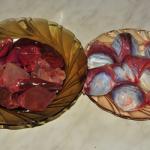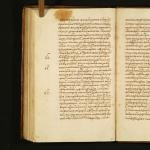Evolution is the process of historical development of the organic world. Evolution occurs under the influence of driving factors, the main one of which is natural selection.
In the process of evolution occurs (results of evolution):
- Change, complication of organisms.
- The emergence of new species(increase in the number [diversity] of species).
- Adaptation of organisms to environmental conditions (living conditions), for example:
- pest resistance to pesticides,
- resistance of desert plants to drought,
- the adaptability of plants to pollination by insects,
- warning (bright) coloring in poisonous animals,
- mimicry (imitation of a non-dangerous animal by a dangerous one),
- protective coloring and shape (invisibility against the background).
All fitness is relative, i.e. adapts the body to only one specific condition. When conditions change, fitness can become useless or even harmful (dark moth on an ecologically clean birch).
Population – unit of evolution
A population is a collection of individuals of the same species living for a long time in a certain part of the range (elementary structural unit of type).
Within a population free crossing, interbreeding between populations is limited (isolation).
Populations of the same species are slightly different from each other because natural selection adapts each population to the specific conditions of its range (population - unit of evolution).
Microevolution and macroevolution
Microevolution- these are changes that occur in populations under the influence of the driving forces of evolution. Ultimately leading to the emergence of a new species.
Macroevolution- this is the process of formation of large systematic units, supraspecific taxa - genera, families and higher.
MORE INFORMATION: Struggle for existence and natural selection, Species, species criteria, Population - divergence - isolation - speciation, Main directions of evolution, Comparative anatomical evidence of evolution
PART 2 ASSIGNMENTS: Theory of Evolution, Population, Fitness
Tests and assignments
Establish a correspondence between the features of a biological system and the system for which these features are characteristic: 1) population, 2) species. Write numbers 1 and 2 in the correct order.
A) elementary unit of evolution in accordance with STE
B) representatives may never meet due to isolation
C) the probability of interbreeding between members of the group is maximally probable
D) breaks up into smaller, separate groups
D) the distribution area can cover several continents
Choose one, the most correct option. The emergence of adaptation of species to their environment is the result
1) the appearance of modification changes
2) interaction of evolutionary factors
3) complications of their organization
4) biological progress
Establish a correspondence between the characteristic of evolution and its feature: 1) factor, 2) result
A) natural selection
B) adaptability of organisms to the environment
B) formation of new species
D) combinative variability
D) preservation of species in stable conditions
E) struggle for existence
Choose one, the most correct option. The result of plant macroevolution is the emergence of new
1) types
2) departments
3) populations
4) varieties
Choose one, the most correct option. The elementary evolutionary unit is considered
1) view
2) genome
3) population
4) genotype
Choose one, the most correct option. Macroevolution is a historical change
1) biocenoses
2) populations
3) supraspecific taxa
4) types
Establish a correspondence between the characteristics of the evolutionary process and the level of evolution at which it occurs: 1) microevolutionary, 2) macroevolutionary. Write numbers 1 and 2 in the correct order.
A) new species are formed
B) supraspecific taxa are formed
C) the gene pool of the population changes
D) progress is achieved through idioadaptations
D) progress is achieved through aromorphosis or degeneration
Read the text. Choose three true statements. Write down the numbers under which they are indicated.
(1) The evolutionary process consists of macroevolution and microevolution. (2) Microevolution occurs at the population-species level. (3) The guiding factor of evolution is the struggle for existence. (4) The elementary unit of evolution is the class. (5) The main forms of natural selection are driving, stabilizing, and breaking.
Choose one, the most correct option. Cannot be considered a consequence of the evolution of organisms
1) adaptability of organisms to their environment
2) diversity of the organic world
3) hereditary variability
4) formation of new species
Choose one, the most correct option. The results of evolution include
1) variability of organisms
2) heredity
3) adaptability to environmental conditions
4) natural selection of hereditary changes
Choose one, the most correct option. The tiered arrangement of tree root systems in the forest is a device that was formed under the influence of
1) metabolism
2) circulation of substances
3) driving forces of evolution
4) self-regulation
Select three provisions of the synthetic theory of evolution.
1) unit of evolution – population
2) unit of evolution – species
3) factors of evolution - mutational variability, genetic drift, population waves
4) factors of evolution - heredity, variability, struggle for existence
5) forms of natural selection – driving and sexual
6) forms of natural selection – driving, stabilizing, disruptive
Read the text. Select three sentences that describe examples of mimicry in nature. Write down the numbers under which they are indicated.
(1) Female birds nesting on the ground practically blend into the general background of the area. (2) Eggs and chicks of these bird species are also invisible. (3) Many non-venomous snakes are very similar to poisonous ones. (4) A number of stinging insects or insects with poisonous glands develop bright colors that discourage anyone from trying them. (5) Bees and their imitators, hover flies, are unattractive to insectivorous birds. (6) Some butterflies have a pattern on their wings that resembles the eyes of a predator.
Read the text. Choose three sentences that describe examples of protective coloration in nature. Write down the numbers under which they are indicated.
(1) Female birds nesting on the ground practically blend into the general background of the area, and their eggs and chicks are also invisible. (2) Similarity to objects in the environment also allows many animals to avoid collisions with predators. (3) A number of stinging insects or insects with poisonous glands develop bright colors that discourage anyone from trying them. (4) In the regions of the Far North, white coloring is very common among animals. (5) Some butterflies have a pattern on their wings that resembles the eyes of a predator. (6) In some animals, spotted coloring imitates the alternation of light and shadow in the surrounding nature and makes them less noticeable in dense thickets.
Look at the picture of a birch moth butterfly and determine (A) the type of adaptation, (B) the form of natural selection, and (C) the direction of evolution that led to the formation of the two forms of butterflies. Write down three numbers (numbers of terms from the proposed list) in the correct order.
1) idioadaptation
2) mimicry
3) convergence
4) driving
5) aromorphosis
6) disguise
7) stabilizing

Consider the drawing depicting the forelimb of different mammals and determine (A) the direction of evolution, (B) the mechanism of evolutionary transformation, (C) the form of natural selection that led to the formation of such organs. For each letter, select the corresponding term from the list provided.
1) aromorphosis
2) stabilizing
3) general degeneration
4) divergence
5) driving
6) idioadaptation
7) morphophysiological regression
8) convergence

Look at the picture of a seahorse and identify (A) the type of adaptation, (B) the form of natural selection, and (C) the path of evolution that led to the formation of such an adaptation in this animal. For each letter, select the corresponding term from the list provided.
1) tearing
2) disguise
3) idioadaptation
4) dismembering coloring
5) parallelism
6) mimetism
7) driving

Look at the picture of a hummingbird and an anteater and identify (A) the type of adaptation, (B) the form of natural selection, and (C) the path of evolution that led to the formation of such adaptations. For each letter, select the corresponding term from the list provided.
1) driving
2) disruptive
3) degeneration
4) idioadaptation
5) divergence
6) specialization
7) sexual dimorphism
Choose two correct answers out of five and write down the numbers under which they are indicated. What processes occur at the population level?
1) ontogeny
2) divergence
3) embryogenesis
4) aromorphosis
5) free crossing
© D.V. Pozdnyakov, 2009-2018




Adblock detector
Genetic drift as a factor of evolution
We can consider genetic drift as one of the factors in the evolution of populations. Thanks to drift, allele frequencies can change randomly in local populations until they reach an equilibrium point - the loss of one allele and the fixation of another. In different populations, genes “drift” independently. Therefore, the results of drift turn out to be different in different populations - in some one set of alleles is fixed, in others - another. Thus, genetic drift leads, on the one hand, to a decrease in genetic diversity within populations, and on the other hand, to an increase in differences between populations, to their divergence in a number of traits. This divergence, in turn, can serve as the basis for speciation.
During the evolution of populations, genetic drift interacts with other evolutionary factors, primarily with natural selection. The ratio of the contributions of these two factors depends on both the intensity of selection and the size of populations. At high selection intensity and high population size, the influence of random processes on the dynamics of gene frequencies in populations becomes negligible. On the contrary, in small populations with small differences in fitness between genotypes, genetic drift becomes crucial. In such situations, a less adaptive allele may become fixed in the population, while a more adaptive one may be lost.
As we already know, the most common consequence of genetic drift is the depletion of genetic diversity within populations due to the fixation of some alleles and the loss of others. The mutation process, on the contrary, leads to an enrichment of genetic diversity within populations. An allele lost as a result of drift can arise again and again due to mutation.
Since genetic drift is an undirected process, simultaneously with a decrease in diversity within populations, it increases the differences between local populations. Migration counteracts this. If allele A is fixed in one population, and allele a in another, then the migration of individuals between these populations leads to the fact that allelic diversity again arises within both populations.
Population waves and genetic drift. Population sizes rarely remain constant over time. Upswings in numbers are followed by downturns. S.S. Chetverikov was one of the first to draw attention to periodic fluctuations in the number of natural populations, population waves. They play a very important role in the evolution of populations. Genetic drift has little effect on allele frequencies in large populations. However, during periods of sharp decline in numbers, its role greatly increases. At such moments it can become a decisive factor in evolution. During a recession, the frequency of certain alleles can change dramatically and unpredictably. There may be a loss of certain alleles and a sharp depletion of the genetic diversity of populations. Then, when the population size begins to increase, the population will, from generation to generation, reproduce the genetic structure that was established at the moment it passed through the population bottleneck. An example is the situation with cheetahs - representatives of the cat family. Scientists have discovered that the genetic structure of all modern cheetah populations is very similar. At the same time, genetic variability within each population is extremely low. These features of the genetic structure of cheetah populations can be explained if we assume that relatively recently (a couple of hundred years ago) this species passed through a very narrow population bottleneck, and all modern cheetahs are descendants of several (according to American researchers, 7) individuals.
The bottleneck effect appears to have played a very significant role in the evolution of human populations. The ancestors of modern humans spread throughout the world over tens of thousands of years. Along the way, many populations died out completely. Even those that survived often found themselves on the verge of extinction. Their numbers fell to a critical level. During passage through the population bottleneck, allele frequencies changed differently in different populations. Certain alleles were lost completely in some populations and fixed in others. After the populations were restored, their altered genetic structure was reproduced from generation to generation. These processes, apparently, determined the mosaic distribution of some alleles that we observe today in local human populations. Below is the distribution of the B allele according to the AB0 blood group system in humans. Significant differences between modern populations may reflect the consequences of genetic drift that occurred in prehistoric times as ancestral populations passed through a population bottleneck.
Founder effect. Animals and plants, as a rule, penetrate new territories for the species (islands, new continents) in relatively small groups. The frequencies of certain alleles in such groups may differ significantly from the frequencies of these alleles in the original populations. Settling into a new territory is followed by an increase in the number of colonists. The numerous populations that arise reproduce the genetic structure of their founders. The American zoologist Ernst Mayr, one of the founders of the synthetic theory of evolution, called this phenomenon the founder effect.
The founder effect apparently played a leading role in shaping the genetic structure of animal and plant species inhabiting volcanic and coral islands. All of these species are descended from very small groups of founders who were lucky enough to reach the islands. It is clear that these founders represented very small samples from the parental populations, and allele frequencies in these samples could be very different. Let us recall our hypothetical example with foxes, which, drifting on ice floes, ended up on uninhabited islands. In each of the daughter populations, allele frequencies differed sharply from each other and from the parent population. It is the founder effect that explains the amazing diversity of oceanic faunas and floras and the abundance of endemic species on the islands. The founder effect has also played an important role in the evolution of human populations. Please note that the B allele is completely absent in American Indians and Australian Aborigines. These continents were inhabited by small groups of people. Due to purely random reasons, among the founders of these populations there might not have been a single carrier of the B allele. Naturally, this allele is absent in the derived populations.
Genetic drift and the molecular clock of evolution. The end result of genetic drift is the complete elimination of one allele from the population and the consolidation (fixation) of another allele in it. The more often a particular allele occurs in a population, the higher the probability of its fixation due to genetic drift. Calculations show that the probability of fixation of a neutral allele is equal to its frequency in the population.
Each allele that we observe in populations once arose as a result of mutation. Mutations occur at an average frequency of 10-5 per gene per gamete per generation. Therefore, the smaller the population, the less likely it is that in each generation at least one individual in this population will be a carrier of a new mutation. In a population of 100,000 individuals, in each new generation there will be a new mutant allele with a probability close to one, but its frequency in the population (1 in 200,000 alleles) and, therefore, the probability of its fixation will be very low. The probability that the same mutation will occur in at least one individual in a population of 10 individuals in the same generation is negligible, but if such a mutation does occur in this population, then the frequency of the mutant allele (1 in 20 alleles) and the chances of its fixation will be relatively high.
Large populations do not “wait” long for the mutational occurrence of a new allele, but they fix it for a long time, and small populations “wait” for a very long time for a mutation to arise, but after it has arisen, it can be quickly fixed. This leads to a conclusion that is paradoxical at first glance: the probability of fixation of neutral alleles depends only on the frequency of their mutational occurrence and does not depend on the population size.
Since the frequencies of neutral mutations are approximately the same in different species, the rate of fixation of these mutations should be approximately the same. It follows that the number of mutations accumulated in the same gene must be proportional to the time of independent evolution of these species. In other words, the more time has passed since the separation of two species from a common advanced species, the more neutral mutational substitutions distinguish these species.
The “molecular clock of evolution” method is based on this principle - determining the time that has passed since the moment when the ancestors of different systematic groups began to evolve independently of each other.
American researchers E. Zukurkendl and L. Polling were the first to discover that the earlier their evolutionary paths diverged, the greater the number of differences in the sequence of amino acids in hemoglobin and cytochrome c in different species of mammals. This pattern was later confirmed using vast experimental material, including dozens of different genes and hundreds of species of animals, plants and microorganisms. It turned out that the molecular clock runs, as follows from the theory of genetic drift, at a constant speed. Calibration of the molecular clock is done on a gene-by-gene basis, since different genes may differ in the frequency of occurrence of neutral mutations. To do this, we estimate the number of substitutions accumulated in a certain gene in representatives of taxa whose divergence time is reliably established based on paleontological data. Once molecular clocks are calibrated, they can be used to measure divergence times between different taxa, even when their common ancestor has not yet been identified in the fossil record.
What is genetic drift? Briefly

Genetic drift is one of the driving forces of evolution.
It is a process during which certain traits appear or disappear randomly in a population due to organisms with those traits producing the most offspring or not reproducing at all.
Genetic drift can reduce genetic diversity within small populations. For example, if only two individuals in a population of ten animals carry a particular gene variant and produce no offspring, then that variant will disappear from the population.
A special type of genetic drift is the “founder effect,” which occurs when a small number of individuals become isolated from the main population. For example, at the end of the 18th century, after a typhoon on Pinjelap Island in Micronesia, only 20 people remained alive, on whom the fate of future generations depended. Today, 5-10 percent of the island's population suffers from color blindness, which is extremely rare elsewhere. Apparently, one of the typhoon survivors was a carrier of the recessive gene for this disease.
GENE DRIFT, genetic drift (from the Dutch drijven - to drive, to swim), random fluctuations in the frequency of gene alleles in a number of generations of a population with a limited number. Genetic drift was established in 1931 simultaneously and independently by S. Wright, who proposed this term, and by Russian geneticists D. D. Romashov and N. P. Dubinin, who called such fluctuations “genetic-automatic processes.” The reason for genetic drift is the probabilistic nature of the fertilization process against the background of a limited number of descendants. The magnitude of the allele frequency fluctuations in each generation is inversely proportional to the number of individuals in the population and directly proportional to the product of the allele frequencies of the gene. Such parameters of genetic drift should theoretically lead to the preservation in the gene pool of only one of 2 or more alleles of a gene, and which of them will be preserved is a probabilistic event. Genetic drift, as a rule, reduces the level of genetic variability and in small populations leads to homozygosity of all individuals for one allele; The speed of this process is greater, the smaller the number of individuals in the population. The effect of genetic drift, modeled on a computer, has been confirmed both experimentally and under natural conditions in many species of organisms, including humans. For example, in the smallest population of Greenland Eskimos (about 400 people), the absolute majority of representatives have blood type 0 (I), that is, they are homozygous for the I0 allele, which almost “displaced” other alleles. In 2 populations of much larger numbers, all alleles of the gene (I0, IA and IB) and all blood groups of the ABO system are represented with significant frequency. Genetic drift in permanently small populations often leads to their extinction, which is the reason for the relatively short-term existence of demes. As a result of a decrease in the reserve of variability, such populations find themselves in an unfavorable situation when environmental conditions change. This is due not only to the low level of genetic variability, but also to the presence of unfavorable alleles that constantly arise as a result of mutations. A decrease in the variability of individual populations due to genetic drift can be partially compensated at the level of the species as a whole. Since different alleles are fixed in different populations, the gene pool of the species remains diverse even at a low level of heterozygosity in each population. In addition, in small populations alleles with low adaptive value can be fixed, which, however, when the environment changes, will determine adaptability to new conditions of existence and ensure the preservation of the species. In general, genetic drift is an elementary evolutionary factor that causes long-term and directed changes in the gene pool, although in itself it does not have an adaptive nature.
Random changes in allele frequencies also occur during a sharp one-time decrease in population size (as a result of catastrophic events or migration of part of the population). This is not genetic drift and is referred to as the bottleneck effect or founder effect. In humans, such effects underlie the increased incidence of certain hereditary diseases in some populations and ethnic groups.
Advertising
Lit.: Kaidanov L.Z. Population genetics. M., 1996.
V. S. Mikheev.
GENE DRIFT — This is a change in the frequency of genes and genotypes of a population that occurs due to the action of random factors. These phenomena occur independently of each other. These phenomena were discovered by the English scientist Fisher and the American Wright. Domestic geneticists Dubinin and Romashov introduced the concept genetic-automatic process. This is a process that occurs as a result genetic drift An allele's frequency may fluctuate, or the allele may become established in a population or disappear from the population's gene pool.
This phenomenon was studied in some detail by Wright. He showed that Genetic drift is closely dependent on 4 factors:
1. Population size
2. Mutation pressure
3. Gene flow
Selective value of a given allele
The larger the population, the less effective genetic drift is. In large populations selection is effective.
The higher the mutation pressure, the more frequent the mutations, the less effective genetic drift is.
Gene flow is the exchange of genes between neighboring populations. The higher the gene flow, the higher the exchange of migrants, the less effective genetic drift.
The higher the selective value of the allele, the less effective genetic drift is.
The effectiveness of genetic drift as a factor of evolution is more clearly manifested when the population consists of small isolated positions; between these colonies there is very little exchange of migrants.
When a population has a high number, then periodically this population sharply reduces its number and dies. A high number of individuals and a newly emerging population is formed due to a small number of surviving individuals, i.e. bottleneck effect (manifestation as a “founder’s principle”). (Mlter).
For example, in some area there is a large maternal population that is genetically diverse. Several of its individuals accidentally became isolated from the maternal population. Those animals that are isolated, they do not represent representative sample, i.e. are not carriers of all the genes that the maternal population possesses. The gene pool of these individuals (new individuals), isolated, is random and impoverished.
If conditions in an isolated area are favorable, then inbreeding will occur between individuals and homozygotes will occur for certain traits. This newly formed daughter population will be different from the original mother population. Its gene pool will be determined genetically, especially in those individuals who founded this population.
Genetic drift, as a factor of evolution, is of high importance at different stages of the emergence of a population, when the population size is not large.
An example of genetic drift. Among American entrepreneurs there are often people with Morphan's syndrome. They can be easily identified by their appearance (tall, cutting, short torso, physically strong). Body features are the result of genetic drift. The ship's passengers arriving in America had one and the spread of these qualities occurred thanks to people from the polar (northern) Eskimo tribe in northern Greenland. 270 people have been isolated for generations. As a result, changes occurred in the frequency of alleles that determine blood type.
The section of DNA where a particular gene is located is called a locus. It may contain alternative versions of genetic information - alleles. Any population contains a large number of these structures. In this case, the share of a particular allele in the general genome of a population is called gene frequency.
In order for a certain mutation to lead to evolutionary changes in a species, its frequency must be sufficiently high, and the mutant allele must be fixed in all individuals of each generation. When its quantity is insignificant, mutational changes are not able to affect the evolutionary history of organisms.
In order for the allele frequency to increase, certain factors must operate - genetic drift, migration and
Genetic drift is the random growth of an allele under the influence of several events that combine and are stochastic in nature. This process is associated with the fact that not all individuals in the population take part in reproduction. It is most characteristic of traits or diseases that are rare, but due to lack of selection are able to persist in a genus or even an entire population of small size for a long time. This pattern is often observed in small populations that do not exceed 1000 individuals, since in this case migration is extremely small.
In order to better understand genetic drift, you should know the following patterns. In cases where the allele frequency is 0, it does not change in subsequent generations. If it reaches 1, then they say that the gene is fixed in the population. Random genetic drift is a consequence of the process of fixation with the simultaneous loss of one allele. Most often, this pattern is observed when mutations and migrations do not cause permanent changes in the constituent loci.

Because gene frequency is non-directional, it reduces species diversity and also increases variation between local populations. It is worth noting that this is counteracted by migration, in which different groups of organisms exchange their alleles. It should also be said that genetic drift has virtually no effect on the frequency of individual genes in large populations, but in large populations it can become decisive. In this case, the number of alleles changes dramatically. Some genes may be permanently lost, significantly reducing genetic diversity.

As an example, we can cite mass epidemics, after which the restoration of the population was carried out practically at the expense of several of its representatives. Moreover, all descendants had a genome identical to their ancestors. Subsequently, the expansion of allelic diversity was ensured by the importation of sires or away matings, which contribute to the growth of differences at the gene level.
An extreme manifestation of genetic drift is the emergence of a completely new population, which is formed from only a few individuals - the so-called founder effect.
It should be said that biotechnology studies the patterns of genome rearrangement. - this is a technique of this science that allows you to transfer hereditary information. At the same time, gene transfer makes it possible to combat the interspecies barrier, as well as impart the necessary properties to organisms.
Genetic drift as an example
The mechanism of genetic drift can be demonstrated with a small example. Let's imagine a very large colony of bacteria isolated in a drop of solution. The bacteria are genetically identical except for one gene with two alleles A And B. Allele A present in one half of bacteria, allele B- from the other. Therefore, the allele frequency A And B equal to 1/2. A And B- neutral alleles, they do not affect the survival or reproduction of bacteria. Thus, all bacteria in the colony have the same chance of surviving and reproducing.
Then we reduce the size of the drop so that there is enough food for only 4 bacteria. All others die without reproducing. Among the four survivors, there are 16 possible allele combinations A And B:
(A-A-A-A), (B-A-A-A), (A-B-A-A), (B-B-A-A),
(A-A-B-A), (B-A-B-A), (A-B-B-A), (B-B-B-A),
(A-A-A-B), (B-A-A-B), (A-B-A-B), (B-B-A-B),
(A-A-B-B), (B-A-B-B), (A-B-B-B), (B-B-B-B).
The probability of each combination
where 1/2 (allele probability A or B for each surviving bacterium) is multiplied 4 times (the total size of the resulting population of surviving bacteria)
If you group the options by the number of alleles, you get the following table:
As can be seen from the table, in six out of 16 variants the colony will have the same number of alleles A And B. The probability of such an event is 6/16. The probability of all other options, where the number of alleles A And B unequally slightly higher and amounts to 10/16.
Genetic drift occurs when allele frequencies change in a population due to random events. In this example, the bacterial population has been reduced to 4 survivors (bottleneck effect). At first the colony had the same allele frequencies A And B, but the chances that the frequencies will change (the colony will undergo genetic drift) are higher than the chances that the original allele frequencies will remain the same. There is also a high probability (2/16) that as a result of genetic drift, one allele will be lost completely.
Experimental proof by S. Wright
S. Wright experimentally proved that in small populations the frequency of the mutant allele changes quickly and randomly. His experiment was simple: in test tubes with food he placed two females and two males of Drosophila flies, heterozygous for the A gene (their genotype can be written Aa). In these artificially created populations, the concentration of normal (A) and mutation (a) alleles was 50%. After several generations, it turned out that in some populations all individuals became homozygous for the mutant allele (a), in other populations it was completely lost, and, finally, some populations contained both a normal and a mutant allele. It is important to emphasize that, despite the decrease in the viability of mutant individuals and, therefore, contrary to natural selection, in some populations the mutant allele completely replaced the normal one. This is the result of a random process - genetic drift.
Literature
- Vorontsov N.N., Sukhorukova L.N. Evolution of the organic world. - M.: Nauka, 1996. - P. 93-96. - ISBN 5-02-006043-7
- Green N., Stout W., Taylor D. Biology. In 3 volumes. Volume 2. - M.: Mir, 1996. - P. 287-288. - ISBN 5-03-001602-3
see also
Notes
Wikimedia Foundation. 2010.
See what “Genetic Drift” is in other dictionaries:
Genetic-autosomatic processes, changes in the frequency of genes in a population over a number of generations under the influence of random (stochastic) factors, leading, as a rule, to a decrease in inheritance and population variability. Naib, clearly manifests itself when... ... Biological encyclopedic dictionary
See genetic drift. Ecological encyclopedic dictionary. Chisinau: Main editorial office of the Moldavian Soviet Encyclopedia. I.I. Dedu. 1989 ... Ecological dictionary
genetic drift- Changing gene frequencies in a small population according to the principle of random sampling Topics of biotechnology EN genetic drift ... Technical Translator's Guide
Genetic drift. See genetically automatic process. (Source: “English-Russian Explanatory Dictionary of Genetic Terms”. Arefiev V.A., Lisovenko L.A., Moscow: Publishing House VNIRO, 1995) ... Molecular biology and genetics. Dictionary.
genetic drift- genų dreifas statusas T sritis augalininkystė apibrėžtis Atsitiktinis populiacijos genetinės sandaros pakitimas. atitikmenys: engl. genetic drift rus. genetic drift; genetic drift... Žemės ūkio augalų selekcijos ir sėklininkystės terminų žodynas
See Genetic drift... Large medical dictionary
Processes that determine changes in the frequency of genes, or the frequency of mutant forms in Populations. The term was proposed by the American geneticist S. Wright (1931). Same as Genetic automatic processes... Great Soviet Encyclopedia
Genetic drift- random (stochastic) changes in gene frequencies over a number of generations, occurring in small populations as a result of an error in the sampling of gametes during crossing... Physical Anthropology. Illustrated explanatory dictionary.
Genetic drift- - genetically automatic processes - the phenomenon of non-directional changes in the frequencies of allelic variants of genes in a population, due to random statistical reasons... Dictionary of psychogenetics
It means moving something slowly and constantly. In particular: Vessel drift: Displacement (drift) of a vessel from the course line under the influence of wind. Drift is characterized by the angle between the track line and the true course line; to measure this value, ... Wikipedia is used
Books
- Biology. 9 11 grades Biological constructor 3. 0. Interact collection. models. Federal State Educational Standard (CDpc), Vabishchevich A.P., The collection contains 80 virtual experiments and tasks, equipped with detailed methodological recommendations. The models are designed to support the teaching of the following sections of general... Category:
Genetic drift as a factor of evolution.
Genetic drift, or genetic-automatic processes, is the phenomenon of non-directional changes in the frequencies of allelic variants of genes in a population.We can consider genetic drift as one of the factors in the evolution of populations. Thanks to drift, allele frequencies can change randomly in local populations until they reach an equilibrium point - the loss of one allele and the fixation of another. In different populations, genes “drift” independently. Therefore, the results of drift turn out to be different in different populations—in some, one set of alleles is fixed, in others, another. Thus, genetic drift leads, on the one hand, to a decrease in genetic diversity within populations, and on the other hand, to an increase in differences between populations, to their divergence in a number of traits. This divergence, in turn, can serve as the basis for speciation. During the evolution of populations, genetic drift interacts with other evolutionary factors, primarily with natural selection. The ratio of the contributions of these two factors depends on both the intensity of selection and the size of populations. At high selection intensity and high population size, the influence of random processes on the dynamics of gene frequencies in populations becomes negligible. On the contrary, in small populations with small differences in fitness between genotypes, genetic drift becomes crucial. In such situations, a less adaptive allele may become fixed in the population, while a more adaptive one may be lost. As we already know, the most common consequence of genetic drift is the depletion of genetic diversity within populations due to the fixation of some alleles and the loss of others. The mutation process, on the contrary, leads to an enrichment of genetic diversity within populations. An allele lost as a result of drift can arise again and again due to mutation. Since genetic drift is an undirected process, simultaneously with a decrease in diversity within populations, it increases the differences between local populations. Migration counteracts this. If an allele is fixed in one population A, and in the other A Bottleneck effect IN according to the blood group system AB0
Population waves and genetic drift.
Founder effect. founder effect IN IN
Genetic drift and the molecular clock of evolution. Calculations show that the probability of fixation of a neutral allele is equal to its frequency in the population. Each allele that we observe in populations once arose as a result of mutation. Mutations occur with an average frequency of 10 -5 per gene per gamete per generation. Therefore, the smaller the population, the less likely it is that in each generation at least one individual in this population will be a carrier of a new mutation. In a population of 100,000 individuals, in each new generation there will be a new mutant allele with a probability close to one, but its frequency in the population (1 in 200,000 alleles) and, therefore, the probability of its fixation will be very low. The probability that the same mutation will occur in at least one individual in a population of 10 individuals in the same generation is negligible, but if such a mutation does occur in this population, then the frequency of the mutant allele (1 in 20 alleles) and the chances of its fixation will be relatively high. Large populations do not “wait” long for the mutational occurrence of a new allele, but they fix it for a long time, and small populations “wait” for a very long time for a mutation to arise, but after it has arisen, it can be quickly fixed. This leads to a seemingly paradoxical conclusion: the probability of fixation of neutral alleles depends only on the frequency of their mutational occurrence and does not depend on the population size. the method of “molecular clock of evolution” - determining the time that has passed since the moment when the ancestors of different systematic groups began to evolve independently of each other. With
Genetic drift, or genetic-automatic processes, is the phenomenon of non-directional changes in the frequencies of allelic variants of genes in a population. We can consider genetic drift as one of the factors in the evolution of populations. Thanks to drift, allele frequencies can change randomly in local populations until they reach an equilibrium point - the loss of one allele and the fixation of another. In different populations, genes “drift” independently. Therefore, the results of drift turn out to be different in different populations—in some, one set of alleles is fixed, in others, another. Thus, genetic drift leads, on the one hand, to a decrease in genetic diversity within populations, and on the other hand, to an increase in differences between populations, to their divergence in a number of traits. This divergence, in turn, can serve as the basis for speciation. During the evolution of populations, genetic drift interacts with other evolutionary factors, primarily with natural selection. The ratio of the contributions of these two factors depends on both the intensity of selection and the size of populations. At high selection intensity and high population size, the influence of random processes on the dynamics of gene frequencies in populations becomes negligible. On the contrary, in small populations with small differences in fitness between genotypes, genetic drift becomes crucial. In such situations, a less adaptive allele may become fixed in the population, while a more adaptive one may be lost. As we already know, the most common consequence of genetic drift is the depletion of genetic diversity within populations due to the fixation of some alleles and the loss of others. The mutation process, on the contrary, leads to an enrichment of genetic diversity within populations. An allele lost as a result of drift can arise again and again due to mutation. Since genetic drift is an undirected process, simultaneously with a decrease in diversity within populations, it increases the differences between local populations. Migration counteracts this. If an allele is fixed in one population A, and in the other A, then the migration of individuals between these populations leads to the re-emergence of allelic diversity within both populations. Bottleneck effect apparently played a very significant role in the evolution of human populations. The ancestors of modern humans spread throughout the world over tens of thousands of years. Along the way, many populations died out completely. Even those that survived often found themselves on the verge of extinction. Their numbers fell to a critical level. During passage through the population bottleneck, allele frequencies changed differently in different populations. Certain alleles were lost completely in some populations and fixed in others. After the populations were restored, their altered genetic structure was reproduced from generation to generation. These processes, apparently, determined the mosaic distribution of some alleles that we observe today in local human populations. Below is the allele distribution IN according to the blood group system AB0 in people. Significant differences between modern populations may reflect the consequences of genetic drift that occurred in prehistoric times as ancestral populations passed through a population bottleneck.
Population waves and genetic drift. Population sizes rarely remain constant over time. Upswings in numbers are followed by downturns. S.S. Chetverikov was one of the first to draw attention to periodic fluctuations in the number of natural populations, population waves. They play a very important role in the evolution of populations. Genetic drift has little effect on allele frequencies in large populations. However, during periods of sharp decline in numbers, its role greatly increases. At such moments it can become a decisive factor in evolution. During a recession, the frequency of certain alleles can change dramatically and unpredictably. There may be a loss of certain alleles and a sharp depletion of the genetic diversity of populations. Then, when the population size begins to increase, the population will, from generation to generation, reproduce the genetic structure that was established at the moment it passed through the population bottleneck. An example is the situation with cheetahs, representatives of felines. Scientists have discovered that the genetic structure of all modern cheetah populations is very similar. At the same time, genetic variability within each population is extremely low. These features of the genetic structure of cheetah populations can be explained if we assume that relatively recently (a couple of hundred years ago) this species passed through a very narrow population bottleneck, and all modern cheetahs are descendants of several (according to American researchers, 7) individuals.
Founder effect. Animals and plants, as a rule, penetrate new territories for the species (islands, new continents) in relatively small groups. The frequencies of certain alleles in such groups may differ significantly from the frequencies of these alleles in the original populations. Settling into a new territory is followed by an increase in the number of colonists. The numerous populations that arise reproduce the genetic structure of their founders. The American zoologist Ernst Mayr, one of the founders of the synthetic theory of evolution, called this phenomenon founder effect. The founder effect apparently played a leading role in shaping the genetic structure of animal and plant species inhabiting volcanic and coral islands. All of these species are descended from very small groups of founders who were lucky enough to reach the islands. It is clear that these founders represented very small samples from the parental populations, and allele frequencies in these samples could be very different. Let us recall our hypothetical example with foxes, which, drifting on ice floes, ended up on uninhabited islands. In each of the daughter populations, allele frequencies differed sharply from each other and from the parent population. It is the founder effect that explains the amazing diversity of oceanic faunas and floras and the abundance of endemic species on the islands. The founder effect has also played an important role in the evolution of human populations. Note that the allele IN completely absent among American Indians and Australian aborigines. These continents were inhabited by small groups of people. Due to purely random reasons, among the founders of these populations there might not have been a single carrier of the allele IN. Naturally, this allele is absent in derived populations.
Genetic drift and the molecular clock of evolution. The end result of genetic drift is the complete elimination of one allele from the population and the consolidation (fixation) of another allele in it. The more often a particular allele occurs in a population, the higher the probability of its fixation due to genetic drift. Calculations show that the probability of fixation of a neutral allele is equal to its frequency in the population. Each allele that we observe in populations once arose as a result of mutation. Mutations occur at an average frequency of 10 -5 per gene per gamete per generation. Therefore, the smaller the population, the less likely it is that in each generation at least one individual in this population will be a carrier of a new mutation. In a population of 100,000 individuals, in each new generation there will be a new mutant allele with a probability close to one, but its frequency in the population (1 in 200,000 alleles) and, therefore, the probability of its fixation will be very low. The probability that the same mutation will occur in at least one individual in a population of 10 individuals in the same generation is negligible, but if such a mutation does occur in this population, then the frequency of the mutant allele (1 in 20 alleles) and the chances of its fixation will be relatively high. Large populations do not “wait” long for the mutational occurrence of a new allele, but they fix it for a long time, and small populations “wait” for a very long time for a mutation to arise, but after it has arisen, it can be quickly fixed. This leads to a seemingly paradoxical conclusion: the probability of fixation of neutral alleles depends only on the frequency of their mutational occurrence and does not depend on the population size. Since the frequencies of neutral mutations are approximately the same in different species, the rate of fixation of these mutations should be approximately the same. It follows that the number of mutations accumulated in the same gene must be proportional to the time of independent evolution of these species. In other words, the more time has passed since the separation of two species from a common advanced species, the more neutral mutational substitutions distinguish these species. Based on this principle the method of “molecular clock of evolution” - determining the time that has passed since the moment when the ancestors of different systematic groups began to evolve independently of each other. American researchers E. Zukurkendl and L. Polling first discovered that the number of differences in the sequence of amino acids in hemoglobin and cytochrome With in different species of mammals, the earlier their evolutionary paths diverged, the more. This pattern was later confirmed using vast experimental material, including dozens of different genes and hundreds of species of animals, plants and microorganisms. It turned out that the molecular clock runs, as follows from the theory of genetic drift, at a constant speed. Calibration of the molecular clock is done on a gene-by-gene basis, since different genes may differ in the frequency of occurrence of neutral mutations. To do this, we estimate the number of substitutions accumulated in a certain gene in representatives of taxa whose divergence time is reliably established based on paleontological data. Once molecular clocks are calibrated, they can be used to measure divergence times between different taxa, even when their common ancestor has not yet been identified in the fossil record. 1. Why do population waves increase the effects of genetic drift? 2. What role does genetic drift play in the formation of island faunas and floras? 3. Explain the principle of the molecular clock of evolution and its application in evolutionary studies.
Relative to the previous generation.
Encyclopedic YouTube
1 / 3
Shift and drift of influenza
Sequence of processes characteristic of speciation
Evolution. Guiding and non-guiding factors of evolution,
Subtitles
Let's imagine that these are 2 communities, the orange and purple community, and they are separate from each other. And your goal is to go into these communities and find out what the most common type of influenza virus is circulating among these people. So you do this, and the first thing you discover is something very interesting. Namely, it turns out that in the orange community, only influenza A virus is observed. You haven’t forgotten that we have 3 types of viruses, and here, apparently, it is observed that people in this group are only affected by type A. Come on, I'll write it down here, type A. And if you look at the purple community, you'll see something the opposite. You will see that people here also get influenza, but the causative agent is always type B. So, these people are affected by the influenza virus type B. And the influenza virus type B also has 8 pieces of RNA. Let's write it down in purple here, type B. So this is the first thing you should learn on your first day of work. And now there are many different subtypes of type A that affect the orange community, and I've only depicted the dominant strain here. And in fact, there may be many types A circulating in the orange community, but this is the dominant strain. And you know, the same is true for the purple community. It also has a few type B strains circulating. However, the dominant strain in it is the one I pictured for 4. And now I'll give you a little space and let's explain to you what we're going to do. Over the next year, over the next 12 months, we'll be following these two communities. And what is required of you is to note, in general, what is happening in the community with the dominant strain. So, what is important for us is not all strains, but the dominant strain. And we want to know how genetically different strains can compare and what will happen on the first day of our work? So, when I say genetic changes, I'm really comparing it to what we had on the first day of our work—comparing to the original strain. And over the course of 12 months, you accumulate information about what changes occurred during your work. So let's denote that you started here and live near the purple community. And of course, initially we don’t notice any changes. You analyze the type B strain and conclude that there are no changes in it either. However, some time passes. Let's say some time has passed and you're back and looking around the purple community. And you ask what type of strain B is most common among them today. And they report that it is basically the same as before, and it has not changed significantly, but two point mutations have occurred. And in the dominant strain, a couple of point mutations occurred, and therefore it became slightly different from the original one. And you say, “Well, of course there were some genetic changes involved.” The dominant strain has changed somewhat. And then you go away and visit them some time later and they thank you for visiting again. And there have been some other changes since your last visit. And you say: “How interesting.” A slightly deeper analysis is required here. And this is now a virus, a type B virus, it looks a little different compared to how it looked when you started working. And you continue to watch this process, and you know that there is a mutation here, and another one here. So, mutations seem to accumulate. And what you end up with is a dotted line - something like this, where the following mutations take place all the way until the end of the year. And when the end of the year comes and you analyze the dynamics of your virus, you can say that several mutations have occurred. It is somewhat different from what it was in the beginning. And I will mark these small mutations with yellow Xs. And what do we call this process? We'll call it genetic drift. This is genetic drift. This is a normal process that occurs in many types of viruses and bacteria. In reality, all viruses and bacteria make mistakes as they replicate, and you can observe a certain degree of genetic drift over time. Now comes the fun part. You go to an orange community, an orange country if you will, and say that you want to do the same thing with the influenza A virus. And at the beginning of the observation period there is no difference. However, you come back a little later and notice that there have been some changes here, a few mutations, the same ones we talked about above. And you say it's good that there seems to be a little change. And then you discover that, you know, another mutation has occurred when you return from another journey. And you say, “Okay, looks like there are some other changes,” And then something really interesting happens. You discover, upon returning from your third trip, that the entire segment has completely disappeared, and has been replaced by another. And you discover a large new fragment of RNA. And how do you imagine the chain of genetic changes? The differences are really significant, aren't they? And you agree that now about 1/8 of everything has changed, and it will look something like this. And this is a huge leap. And you say, "Okay, now there's been a significant genetic change." And then you come back from your trip again, and you find that there's a small mutation in this green RNA, and maybe another one here. Again, you noted small changes. And you find another mutation here, and maybe here too. And you continue to restore the chain of events - you approach your work very responsibly - you continue to draw up a diagram. And subsequently it turns out that another significant shift has occurred. Let's denote that this area has become different from this one. And so, again, you have a huge leap. Something like that. And finally, at the end of the year, it continues because you have discovered several more mutations. So let's say that these additional mutations occurred here and here. This is what it started to look like. Do you agree with me? The genetic changes over time for the orange population, type A, do look a little different. And it contains elements that I have designated as genetic drift and shift. To be more precise, this part is a variant of the large shift. Here, a whole fragment of RNA seems to have been integrated into the dominant virus. These are 2 shifts that could happen this year. And these areas - let me outline them with a different color, let's say here - this one and this one, they really look more similar to what we were talking about above. These are a kind of stable changes, stable mutations over time. And this is what we usually refer to as genetic drift. So with the influenza A virus, which is in orange, you can see that there's some drift and shift going on. But with the influenza B virus, only genetic drift occurs. And what's happening right now is the most frightening information about the influenza A virus, and that means that whatever giant shifts you see, you have 2 giant drifts, 2 here, if these shifts have occurred, then the entire community have not yet encountered this new influenza A virus. It's not ready for it. The immune system of the community doesn't know what to do about it. And as a result, many people get sick. And what we call a pandemic happens. And there have been several similar pandemics in the past. And each time, as a rule, they were caused by a major genetic shift. And as a result, many people, as I said, get sick, end up in the hospital and may even die. Subtitles by the Amara.org community
Genetic drift as an example
The mechanism of genetic drift can be demonstrated with a small example. Let's imagine a very large colony of bacteria isolated in a drop of solution. The bacteria are genetically identical except for one gene with two alleles A And B. Allele A present in one half of bacteria, allele B- from the other. Therefore, the allele frequency A And B equal to 1/2. A And B- neutral alleles, they do not affect the survival or reproduction of bacteria. Thus, all bacteria in the colony have the same chance of surviving and reproducing.
Then we reduce the size of the drop so that there is enough food for only 4 bacteria. All others die without reproducing. Among the four survivors, there are 16 possible allele combinations A And B:
(A-A-A-A), (B-A-A-A), (A-B-A-A), (B-B-A-A),
(A-A-B-A), (B-A-B-A), (A-B-B-A), (B-B-B-A),
(A-A-A-B), (B-A-A-B), (A-B-A-B), (B-B-A-B),
(A-A-B-B), (B-A-B-B), (A-B-B-B), (B-B-B-B).
The probability of each combination
1 2 ⋅ 1 2 ⋅ 1 2 ⋅ 1 2 = 1 16 (\displaystyle (\frac (1)(2))\cdot (\frac (1)(2))\cdot (\frac (1)(2) )\cdot (\frac (1)(2))=(\frac (1)(16)))where 1/2 (allele probability A or B for each surviving bacterium) is multiplied 4 times (the total size of the resulting population of surviving bacteria)
If you group the options by the number of alleles, you get the following table:
As can be seen from the table, in six out of 16 variants the colony will have the same number of alleles A And B. The probability of such an event is 6/16. The probability of all other options, where the number of alleles A And B unequally slightly higher and amounts to 10/16.
Genetic drift occurs when allele frequencies change in a population due to random events. In this example, the bacterial population has been reduced to 4 survivors (bottleneck effect). At first the colony had the same allele frequencies A And B, but the chances that the frequencies will change (the colony will undergo genetic drift) are higher than the chances that the original allele frequencies will remain the same. There is also a high probability (2/16) that as a result of genetic drift, one allele will be lost completely.
Experimental proof by S. Wright
S. Wright experimentally proved that in small populations the frequency of the mutant allele changes quickly and randomly. His experiment was simple: in test tubes with food he placed two females and two males of Drosophila flies, heterozygous for the A gene (their genotype can be written Aa). In these artificially created populations, the concentration of normal (A) and mutation (a) alleles was 50%. After several generations, it turned out that in some populations all individuals became homozygous for the mutant allele (a), in other populations it was completely lost, and, finally, some populations contained both a normal and a mutant allele. It is important to emphasize that, despite the decrease in the viability of mutant individuals and, therefore, contrary to natural selection, in some populations the mutant allele completely replaced the normal one. This is the result of a random process - genetic drift.
Literature
- Vorontsov N.N., Sukhorukova L.N. Evolution of the organic world. - M.: Nauka, 1996. - P. 93-96. - ISBN 5-02-006043-7.
- Green N., Stout W., Taylor D. Biology. In 3 volumes. Volume 2. - M.: Mir, 1996. - P. 287-288. -


















